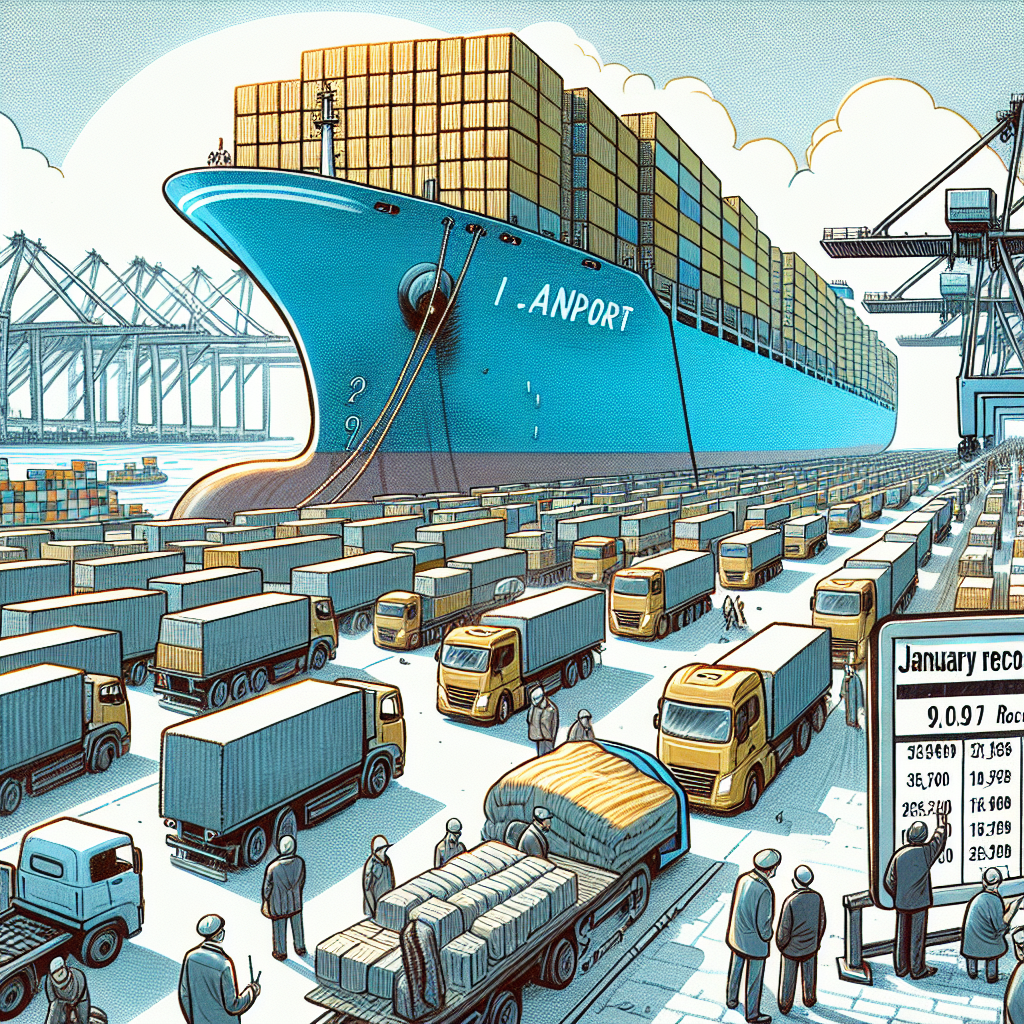Considering the impact of President Trump’s tariff policies, major businesses have been accelerating their imports before more tariff policies take effect in the United States. In the just-passed January, the Port of Los Angeles, the largest port in the country, broke a century-old record in cargo volume. It is worth noting that the proportion of freight from China saw a decline.
At the beginning of the year, the Port of Los Angeles was exceptionally busy. Gene Seroka, Executive Director of the port, stated at a press conference on Wednesday, February 19th, that the port handled over 924,000 standard cargo containers in January, an 8% increase from the same period last year. This marked the busiest start to a year in the port’s 117-year history, with “not a single vessel delayed.”
Additionally, the January wildfires in Los Angeles did not affect the port. The import container volume at the Port of Los Angeles last month was around 484,000, a 9.5% increase from last year, while the export volume decreased by 10.5% compared to 2024.
The port also transported over 327,000 empty containers last month, a 14% increase from the same period last year. Seroka mentioned, “This usually indicates that more goods will enter the port in the coming weeks and months.”
He attributed the port’s unusually busy activity to several reasons. In addition to strong consumer demand driven by the robust U.S. economy and labor negotiations at eastern ports, the biggest reason was related to tariff policies: retailers wanted to expedite imports before the expected tariff hikes on goods from China, Mexico, and Canada by the Trump administration take effect.
Seroka pointed out that many businesses had previously worried about shortages of goods due to Chinese New Year factory closures, prompting them to import goods in advance. As factories resume normal operations, February’s cargo volume may decline, but he anticipates that trade volumes will remain high in the coming months.
“We have experience in this regard. Since the tariffs implemented in the spring of 2018, we have seen a significant increase in cargo volume before a sharp decline afterward, and the situation is the same now,” he said.
Currently, the U.S. has started imposing a 10% tariff on China, with Trump previously mentioning a possible increase to 60% during his campaign. To save costs, many manufacturers are considering moving factories out of China, which may further reduce imports from China.
Seroka commented at the press conference, “China (container volume) used to account for 57% of our business, now it’s about 45%, and it’s likely to continue to decrease in the future.”
Furthermore, the U.S. is set to end the suspension of a 25% tariff on Canada and Mexico on March 6th. Trump recently declared that, “for fairness,” a full-scale reciprocal tariff will be imposed on all U.S. trading partners.
Rachel Michelin, Chair of the California Retailers Association (CRA), expressed concerns that while some large retailers may be able to adjust flexibly, import early, and minimize the impact of increased costs due to tariffs, “I am concerned that small businesses and small retailers may not have enough capacity to bear all the additional costs that may arise. This is a form of uncertainty and pressure.”
Despite the impressive performance of the port, Seroka noted that a new set of data has raised concerns for them: in January, total retail sales in the U.S. decreased by 0.9%, marking the largest decline in nearly two years. While winter storms sweeping through most parts of the U.S. and the Los Angeles wildfires were the main reasons for this decline, “it may also indicate that consumers are beginning to pull back.”
Michelin added that in addition to the pressure and uncertainty brought by tariffs, rising prices and California’s excessive regulation of small businesses are also contributing factors.
She stated that excessive regulation not only hinders businesses but also imposes additional expenses on consumers, “every time California introduces regulations or passes those bills, costs are incurred, and these costs will also be passed on to consumers.”
“The consumers’ purchasing power is reaching a critical point. I believe consumers’ ability to bear is limited. We can only observe what will happen next,” she said.

